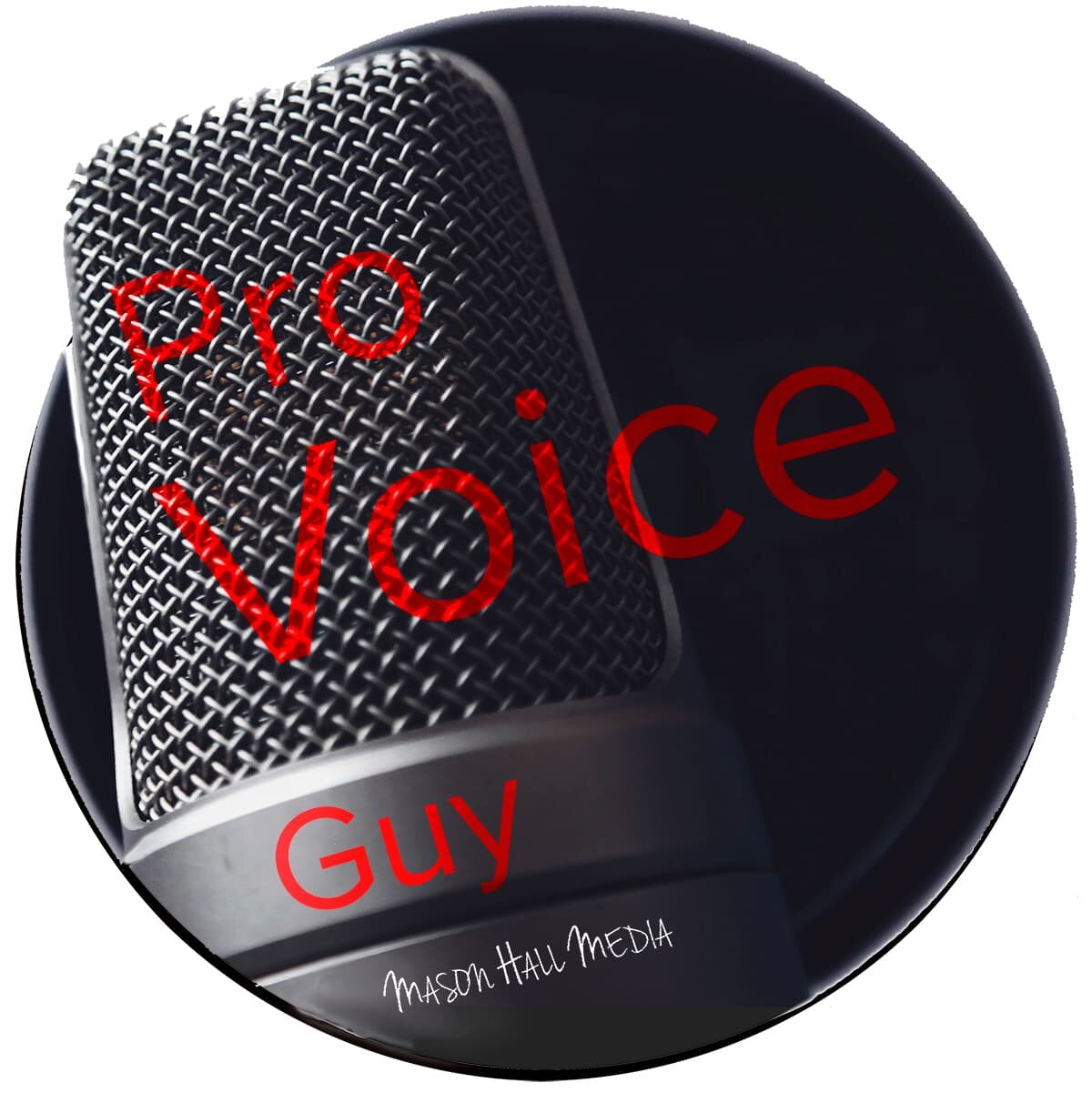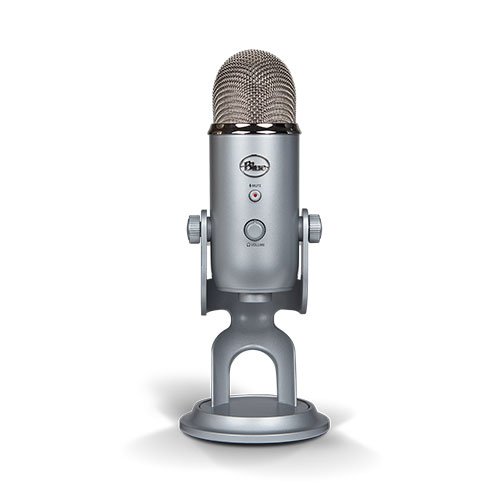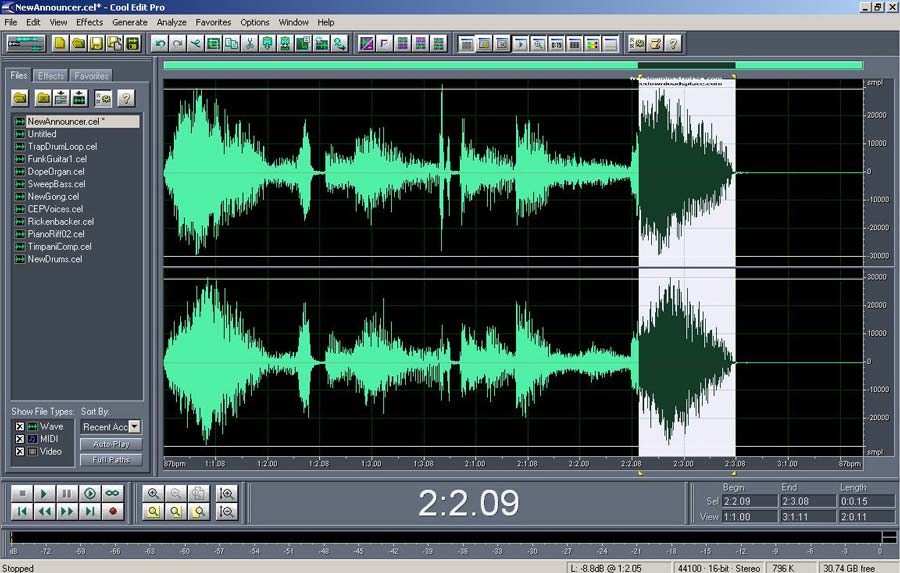Starting Your Own Podcast #1 The Microphone
If you are thinking of starting your own podcast, good for you! It won't take long to get yourself or your organization up and running. Before you get started, you will need to get a few things in place: a microphone, software for recording and editing, and a place to host your podcast. Once you have all of that ready, there are a few best practices to help you sound great. Today, I will cover one of the most essential things for a great podcast, your microphone.
If you are thinking of starting your own podcast, good for you! It won't take long to get yourself or your organization up and running. Before you get started, you will need to get a few things in place: a microphone, software for recording and editing, and a place to host your podcast. Once you have all of that ready, there are a few best practices to help you sound great. Today, I will cover one of the most essential things for a great podcast, your microphone.
Even if you have great content, great software, and a great host, your podcast won't sound great if you don't start out with a high-quality microphone. Fortunately, professional quality microphones are within reach for even the most cash-strapped podcasters.
For the purpose of this post, I am going to be focusing on USB microphones. This assumes that you are using your computer to record your audio. There are other options. There are standalone recorders that take analog microphones via 1/8" or XLR inputs. Some podcasters choose to upgrade to a professional microphone and use a Digital Audio Converter (DAC) to convert the audio. I am not going to go into those here but may pick that topic up in a future post.
Here are some of the options. For each one, I will provide a photo, a brief description, and an audio sample.
Please note, if you purchase one of the products below through the links provided, I may get a small commission. Honestly, it is not much, but legally and ethically, I need to tell you.
My Favorite Mic for Starting Your Own Podcast - The Blue Yeti
As someone who had the privilege of working on some iconic microphones (including the industry standard ElectroVoice RE20), I still amazed by the sound quality of this offering from Blue. Some audiophile will likely leave a comment explaining why these are no good and I should throw mine out, but I use this thing day in and day out and it always produces surprisingly good results.
The Yeti is actually three microphones in one. With three onboard condenser capsules, you can select the pickup pattern. That means you can set it to only record the sound coming from directly in front (great for one voice), the sound coming from the front and back (great for interviews), or the sound for all directions (great for recording music or multiple voices.)
One of my favorite features is the built in 3.5mm headphone jack. This allows you to plug in headphones and monitor your audio in real time without any delay often found with recording software.
Check out the sound. In each of these I am providing one version with raw audio (no processing added) and another version with some compression added in Adobe Premiere.
Blue Yeti - $129.00 - amazon.com
What I Use For Everything Other than Voice Work - The Blue Snowball
I still can't believe that you can pick one of these up for around $50. I also see them at pawn shops for half that. While it doesn't have quite the depth and clarity of the Blue Yeti, honestly, most people will never know the difference. This sits on my desk and I use it constantly for video conferences, YouTube videos, and quick voiceovers. It is also super portable so it goes in my bag when I am on the road.
It lacks the multiple pickup patterns of the Yeti as well as the 3.5mm headphone jack. However, if you don't need those features, this is a great mic. If you are just starting your own podcast, this is a great place to start.
Take a listen to the audio demo. See if you can see the difference.
Blue Snowball - $49.00 - amazon.com
Borrowed From My Son's Room - The CAD GXL2400 USB Microphone
My son got this microphone for his YouTube channel, gaming, video chats, and whatever else he needs audio for. It has a ton of 5-star reviews on Amazon so I thought I would test it out. I have to to admit, for another $50 microphone, it sounds pretty amazing. It looks like a far more expensive mic and, surprisingly, I believe it outperformed by Blue Snowball. Give it a listen for yourself.
CAD GXL2400 USB Microphone - $49.99 - amazon.com
Those are just three of the multitude of inexpensive USB microphones on the market. In a future post, I will fire up the the digital audio convertor and let you hear the difference between these and some professional studio microphones.
In the meantime, check out my podcast here. It is all about starting your own podcast!
If you are looking for a professional intro for your podcast, I can help. Check out my professionally voiced and produced podcast intros starting at $10.
If you want to check out some of the equipment I used in my own studio or write about on this blog, you can read more here.
3 Reasons You Might Want to Try Inexpensive Online Voice Talent
There was a time, not long ago, that access to professional quality voice talent and production was limited to people with big budgets. I remember when a simple :30 radio spot produced at a "mom and pop" studio was at least $200. For anything with top-notch talent and elaborate production, the cost would bump that into the thousands.
These days, you can get someone to produce a :30 spot for $5. As I mentioned in my last post, there are times when experienced, professional voice talent is worth every cent. However, there are also times it might be worth shopping the vast offerings of the internet for something a little less expensive.
There was a time, not long ago, that access to professional quality voice talent and production was limited to people with big budgets. I remember when a simple :30 radio spot produced at a "mom and pop" studio was at least $200. For anything with top-notch talent and elaborate production, the cost would bump that into the thousands.
These days, you can get someone to produce a :30 spot for $5. As I mentioned in my last post, there are times when experienced, professional voice talent is worth every cent. However, there are also times it might be worth shopping the vast offerings of the internet for something a little less expensive.
Here are 3 reasons you might want to try inexpensive online voice talent
1. You don't have the money for anything else.
If you are starting your first podcast, you may not have much money to invest. You may have already spent your entire budget on a good microphone. At this point, your options are:
- Don't have an intro
- Voice the intro yourself
- Shop around and find someone who can do it for a few bucks
Since research shows that listeners decide whether to keep listening within the first few seconds of your podcast, option 3 has some merit.
The same is true if you are starting a YouTube channel, creating a video for your website, or working on any project that needs a strong voice.
2. You are still in the concept stage.
I do a lot of work for organizations who are working on a project that will eventually call for a big audio budget. However, they are still experimenting with some ideas. They need a strong voice, but they aren't quite ready to contract with someone for the final product. Without investing a lot of their budget (or because they don't have a budget yet), they work with someone online who can do it cheap and fast.
But why would decent talent do something for $5-$10 that the organization will pay thousands for later? Well, for me, I don't mind taking these gigs because they usually take very little time. While they still get the same pro-level quality, they typically don't need a lot of revision, and they are willing to have the work done remotely. That means no need to go into a studio or do the job live over an ISDN line. I can do these projects as I have time in between other work.
3. You are just not ready to commit.
Sometimes people and organizations know that a successful project will take some serious investment. However, there are moments when they aren't ready to commit the resources. There is something to be said about getting things right the first time. There are also some situations when it best just to get started. Especially in this modern media world, if we wait until all the buy-in and funding is ready, the moment has passed. In those moments, we work with what we have and just get started.
Whether you are on a limited budget, still in the concept stage, or just not ready to commit, I would be glad to help. Fiverr is a great place to start. You can check out my gigs at the links below. If my voice isn't what you are looking for, there is a plethora of great talent to be found.
Let Me Voice And Produce A Professional Intro For Your Podcast
Let Me Provide Professional Quality Voice Talent For Your Project
3 Things to Consider When Looking for Voice Talent in this New Digital World
Technology has changed everything. The world of audio is no exception. When you listen to music, commercials, podcasts or when you hear the sound behind movies, television shows, and YouTube videos, you are experiencing the digital revolution in sound.
In my last post, I wrote about how much audio has changed during my career. From expensive analog gear to cheap digital gear you can buy online, the barriers to entry into the world of sound have been lowered tremendously.
The impact of these changes is massive. However, I want to focus on what all of this means for you if you are a business or organization looking to purchase voiceover services. In short, everything has changed, and nothing has changed.
Technology has changed everything. The world of audio is no exception. When you listen to music, commercials, podcasts or when you hear the sound behind movies, television shows, and YouTube videos, you are experiencing the digital revolution in sound.
In my last post, I wrote about how much audio has changed during my career. From expensive analog gear to cheap digital gear you can buy online, the barriers to entry into the world of sound have been lowered tremendously.
The impact of these changes is massive. However, I want to focus on what all of this means for you if you are a business or organization looking to purchase voiceover services. In short, everything has changed, and nothing has changed.
There is a greater need for professional voice talent than ever.
There was a time when professional voice talent was only needed by other professionals. In the days before YouTube, podcasts, explainer videos, and other user-generated content nearly everything was created in professional studios. If you wanted a radio commercial, you had it produced by a radio station, an agency, or a recording studio. Big-budget television commercials were produced in big-budget television studios. They had access to voice talent either through their staff or talent agencies.
Now, content is being produced 24/7 by anyone who has something to say and anywhere there is a computer or smartphone. Even organizations with the means to hire large agencies and production companies are moving some of their production in-house.
Here are three things to consider if you are looking for voice talent in this new digital world.
1. You have more choices than ever.
There was a time when choices for voice talent were limited. As mentioned above, the talent was usually brokered through the agencies and studios producing the content.
Today, you can go online and choose from thousands of options. You can scroll through the offerings on Fiverr, UpWork, or Voices.com (to name a few) and listen to what thousands of people have to offer. There are still options available through talent agencies and studios, but they are no longer the only choices.
2. Not all of those choices are good.
I like to listen to some of the many demos available at my fingertips. There is some incredible talent out there. There are also some people who bought some equipment on Amazon and jumped right into the business. For a trained ear, it is relatively easy to tell the difference. However, with all this new tech, it can be easy to put together a decent sounding demo. However, a decent demo doesn't mean that someone can turn around the quality work you need for your project.
3. Talent and experience are still the most important factors.
It doesn't matter if someone is standing in front of a $3000 Neumann microphone in the top production studio in the country or tucked in a spare bedroom with a $150 Blue Yeti, it still comes down to talent. If you are looking for a voice to represent your brand, business, or organization, talent and experience are going to be the most critical indicators of the quality of your end result. Using experienced, professional, talent will ensure quality delivery and exceptional sound quality. Working with a talented pro will also usually save you time in the long run and increase the chances of a high-quality final product.
However, none of this is to dismiss the excellent opportunity created by the growing pool of available "semi-pro" talent. If you are just looking for a voice intro for your new podcast, you may not have the money or connections to hire "a list" voice talent.
In my next post, I will share some of the advantages of working with the new vast pool of talent available online.
Wow! Things Have Changed!
The first time I recorded my voice I was about ten years old. I was using a microphone my dad bought me at Radio Shack, and it was plugged into the cassette recorder I plugged into my parents’ stereo.
From there I was hooked. I studied communications in college and worked at the college radio station. While still in college, I found on-air work at a few small, local radio stations. After college, my radio career took me to Mount Pocono, PA; Allentown, PA; and Austin, TX.
I love the live on-air work, but I was always drawn to the more technical work of producing commercials, on-air promos, and other production elements. There was so much more to be done with sound when working in a recorded format.
The first time I recorded my voice I was about ten years old. I was using a microphone my dad bought me at Radio Shack, and it was plugged into the cassette recorder I plugged into my parents’ stereo.
From there I was hooked. I studied communications in college and worked at the college radio station. While still in college, I found on-air work at a few small, local radio stations. After college, my radio career took me to Mount Pocono, PA; Allentown, PA; and Austin, TX.
I love the live on-air work, but I was always drawn to the more technical work of producing commercials, on-air promos, and other production elements. There was so much more to be done with sound when working in a recorded format.
While I was studying in college and for my first few years of professional work, everything was still analog. Our studios had two-track reel to reel recorders. We edited with grease pencils, razor blades, and tape. For the really fancy work, we worked on 8 track reel to reel machines.
While I was working at WZZO in Allentown, digital editing and production entered the picture. It first arrived in the Dalet automation software for one the company's AM stations, WKAP. The software that ran the station featured a basic digital editing platform. Unfortunately, that lived on a PC in the worst studio in the building and it was still hard to get time on it. Soon after, a new computer showed up in our main production studio running a fancy new non-destructive non-linear editor called SAW (Software Audio Workshop.) Suddenly, editing wasn't permanent. The non-destructive concept meant edits could be made and unmade while working with the audio.
Cool Edit Pro
By the time I got to Austin, Cool Edit Pro had arrived on the scene. Cool Edit Pro was such a barrier-breaking platform. It was eventually purchased by Adobe and now exists as Adobe Audition which is now at the core of my home audio studio.
Since that, digital audio has become even cheaper and easier. Anyone with a Mac has access to GarageBand which is way more powerful than those initial digital editors. Mac and PC users can get Audacity, which is more powerful than most people will ever need, for free. The advent of high-quality digital microphones and inexpensive digital interfaces have created the possibility of capturing studio-quality audio for under $100. The effects built into software can replace thousands of dollars worth of gear.
So, what does all this mean? It means a lot of things for both professional voice talent and for those looking for professional voice talent for their next project. I will look at those things in my next post.














